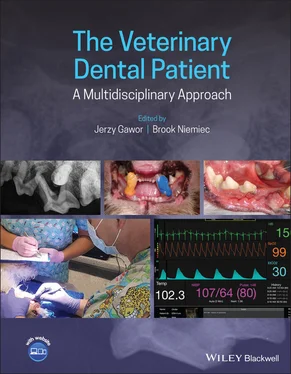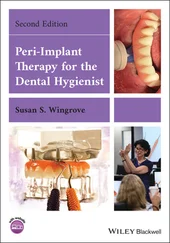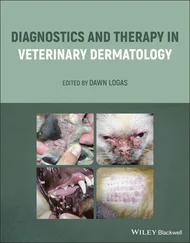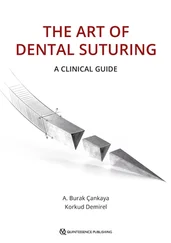The most important part of the dental cleaning procedure is ensuring that the tooth is cleaned below the gumline. A curette or specific subgingival ultrasonic scaler tip should be used to remove subgingival plaque and calculus. Several companies make scaler tips that are specifically designed for this procedure. Removal of this subgingival plaque is vital to the success of the treatment. If it is not removed, bacteria will continue the inflammatory process, leading to the destruction of the periodontium and further bone loss and eventual tooth loss (Westfelt et al. 1998).
Hand scaling of the root to remove subgingival calculus deposits should be performed if a periodontal ultrasonic tip is not available. A curette is used for this procedure. This instrument has a sharp side (the face) and a rounded side, where the sharp side is held toward the tooth surface and the round side toward the gingival tissue. It should adapt to the curvature of the tooth surface; if it does not, the opposite end should be used. The curette is inserted into the pocket with the sharp side facing the root surface. It is moved over the calculus and positioned so that the cutting surface is under the calculus. A rocking pull stroke is used to remove the calculus from the root surface. This procedure is repeated until all calculus is removed.
An explorer should be used to check the tooth surface for remaining calculus. The crown can be inspected for missed plaque by the application of a disclosing solution or for missed calculus by air drying, which will make the calculus appear chalky white. Disclosing solutions should be applied then gently rinsed with water to show any remaining plaque or calculus. This technique must be used with care as it may cause staining of the hair around the patient's mouth.
Polishing with a prophy cup and paste applied with an electrical or air‐powered polisher is an important step. This will remove any missed plaque and smooth out the microscopic scratches on the tooth surface (Bellows 2004). When etching occurs, it gives the plaque bacteria more surface area to attach to the tooth. The prophy cup on a low‐speed handpiece moves at approximately 3000 rpm. Using a higher rpm or staying on a tooth longer than approximately 10 seconds can lead to overheating of the tooth and pulp damage (Holmstrom et al. 1998). Disposable prophy cups are available and inexpensive. The advantage is they don't need to be cleaned after each use.
An inexpensive prophy paste can be made by mixing flour pumice with water or glycerin. There are many commercially available prophy pastes on the market that are more convenient to use, however. These range in grit and hardness from fine to extra course. Fine or flour grit pumice is recommended to ensure the enamel is as smooth as possible.
Irrigation of the mouth following calculus removal and polishing is vital. All pieces of calculus and prophy paste must be removed from the mouth to avoid aspiration upon recovery. This can be done with a spray bottle filled with water or chlorhexidine gluconate. The gingival sulcus should be irrigated to remove debris. Saline or diluted chlorhexidine gluconate (0.12%) can be used. The advantage of chlorhexidine is its substantivity (its ability to adhere to oral tissues and release its agents over an extended period).
The veterinary technician/nurse should be trained and prepared to assist the veterinarian in any additional dental procedures that may need to be performed. This includes the retraction of tissue, handing of instruments, and blotting of blood to keep the work area clear. An experienced veterinary technician/nurse should anticipate the next steps in the procedure and be prepared to assist when needed. They should also properly record the procedure and findings in the patient's medical record.
Postoperatively, the veterinary technician/nurse should postoxygenate and ensure that the back of the mouth is clean, then extubate the patient and provide a comfortable recovery area. When the patient is fully recovered, they should supervise the move from the recovery area to the hospital ward. They should work with the veterinarian to determine appropriate dietary recommendations and postoperative pain management.
4.5.6 Home Care Instructions
The client who understands the importance of and is willing to perform oral home care to ensure that their pet's mouth heals and remains healthy will be happier in the long run. The veterinary technician/nurse should work with them to develop a strong relationship between them and the clinic. Explaining to the client why home care is important and demonstrating how to administer such care is critical to gaining compliance. Home care instructions must include postoperative medications, dietary restrictions or recommendations, an explanation of the procedure, and after care needs, as well as long‐term dental home care recommendations.
Follow‐up visits can often be a technician appointment. It is strongly recommended that all dental patients have a postoperative follow‐up within one to two weeks to allow the technician to evaluate healing, but also to reinforce the need for dental home care. Home care techniques can be evaluated and discussed with the client during these visits.
Some practices use a color‐coding system for continuing follow‐up examinations: a red code means the patient needs to have a follow‐up every three months, orange means every six months, and green means every year. Patients can be up‐ or downgraded from one code to another depending upon the results ( Figure 4.12).
Handouts should be individualized to the patient, and are another way of showing the client the importance of dental health. They should include a simplified dental chart for making notations (e.g., on depth, furcation exposure, or missing/extracted teeth), the prescribed treatment plan, a discharge form, and a copy of the dental X‐rays. Handouts on common dental problems, home care options, and treatments can be created by the veterinary technician/nurse. These should be sent home with the client after discussing the procedure or problem with them in the exam room.
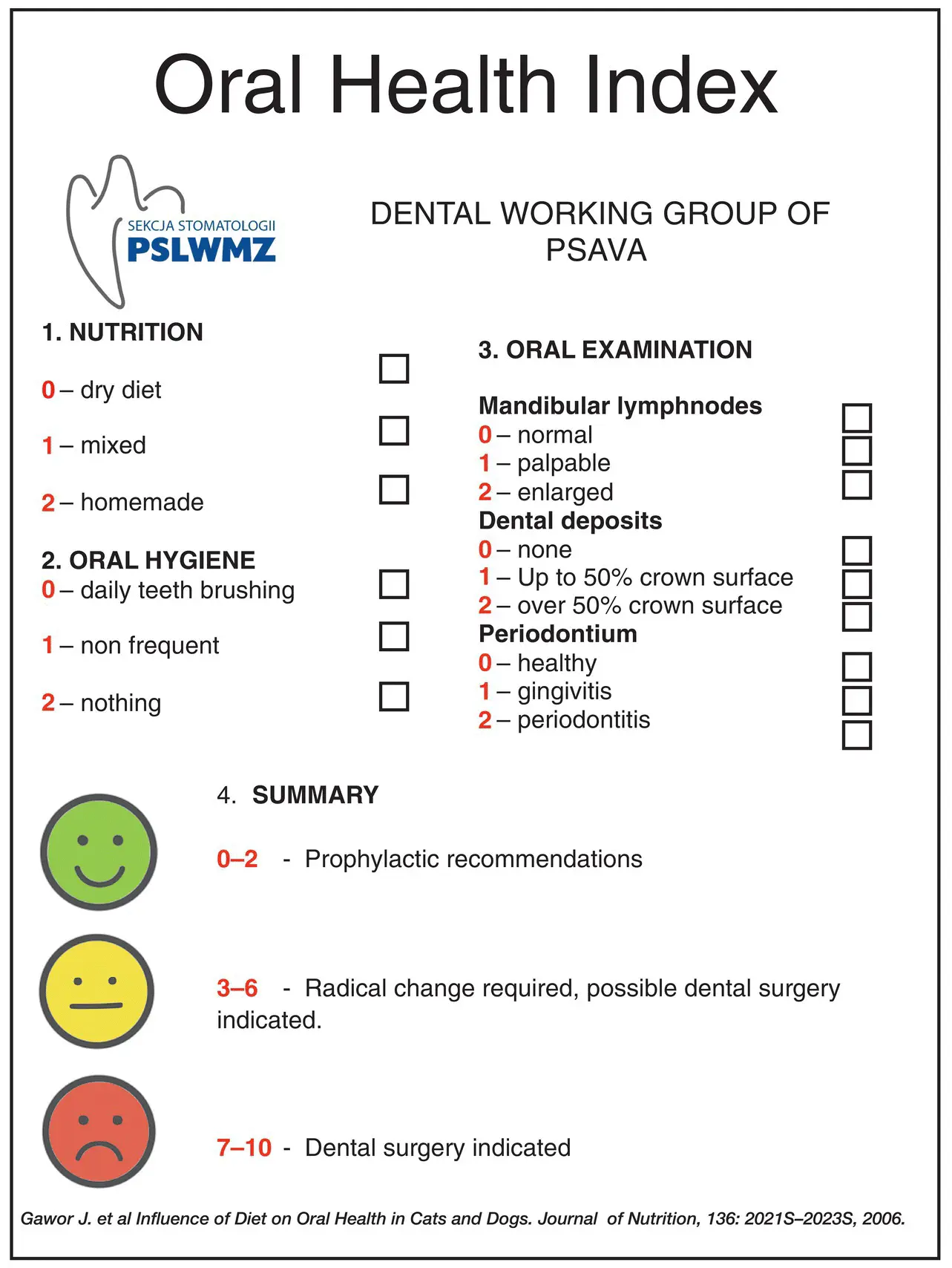
Figure 4.12 Color coding of patients for follow‐up visits.
The veterinary technician/nurse, along with the rest of the veterinary team, should see themselves as public educators. This not only helps more pets receive better dental care but can show that a practice has embraced dentistry and its importance to patient well‐being. There are now many options for getting the word out about the importance of oral health. Social media posts can contain trivia questions, important information, and even interesting cases (with client permission). Consider your audience when posting cases, however, and leave out the bloody gore, even though this can be a useful tool for raising owner awareness of dental conditions.
Be creative. There are many opportunities to educate the public about the importance of oral health for pets. Here are a few ideas:
Hold an open house and tours of the dental suite for clients, visitors, and youth groups
Provide informational brochures in waiting rooms ( Figure 4.11)
Offer a video on your website explaining the client/patient experience on the day of a dental procedure at your practice
Create a smile book with before and after photos and a pictorial step‐by‐step of a dental cleaning procedure ( Figure 4.12)
Write an article for a local newspaper
Visit an elementary school with a dog that loves to have its teeth brushed
Offer a program at a youth group meeting such as 4‐H or Scouts
Provide a booth at a mutt strut or other pet‐related event
Читать дальше
